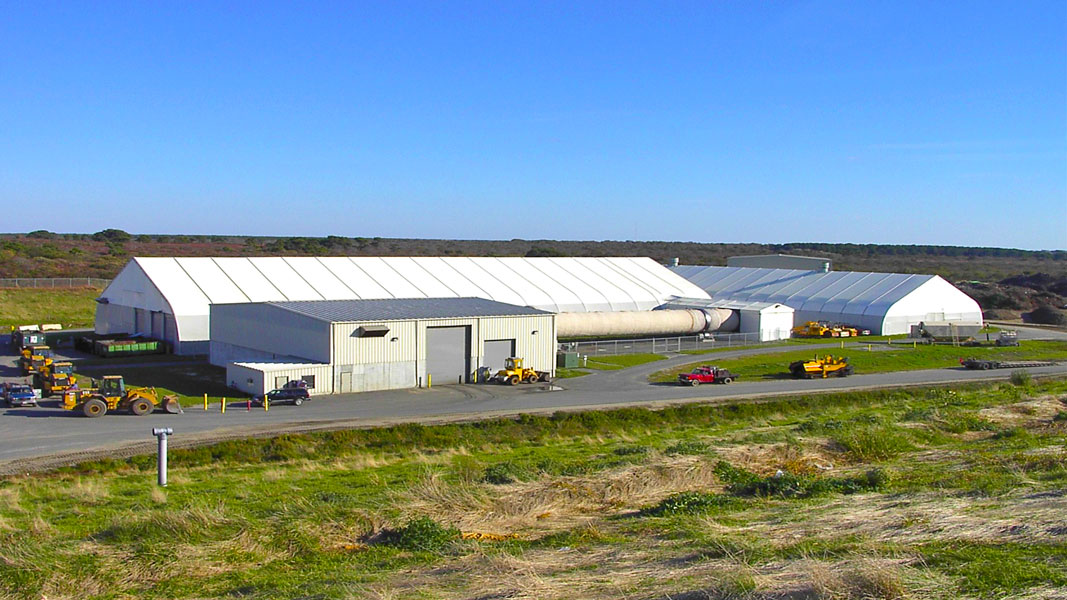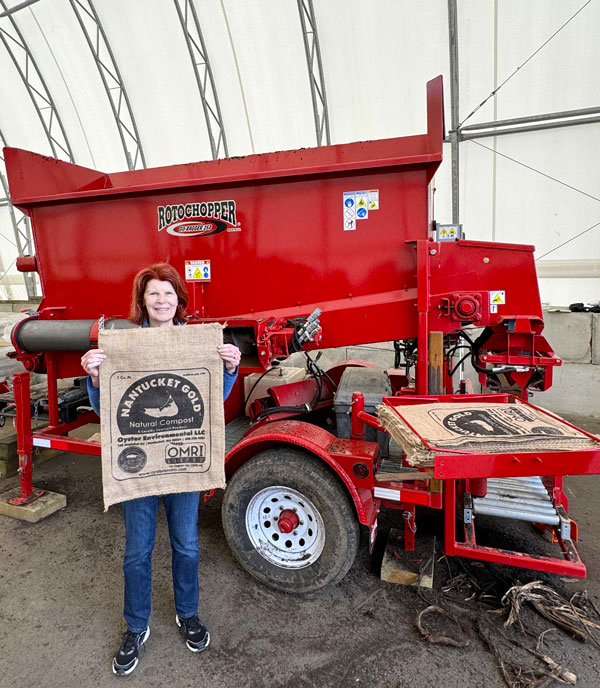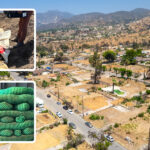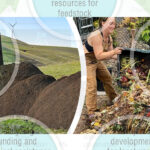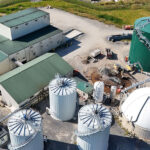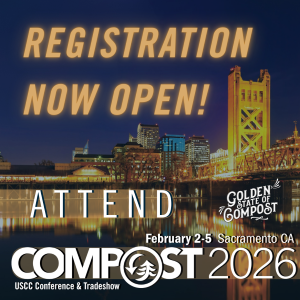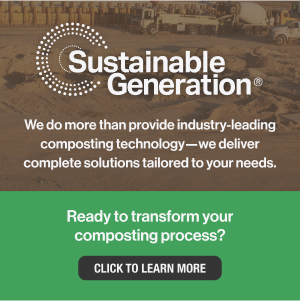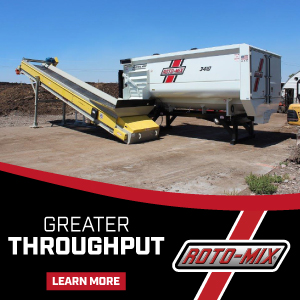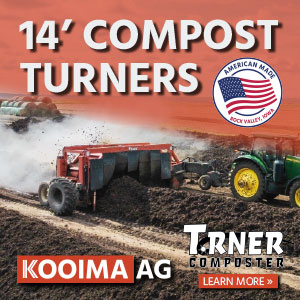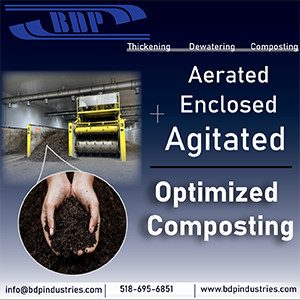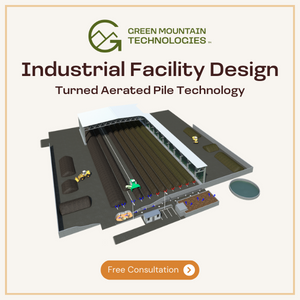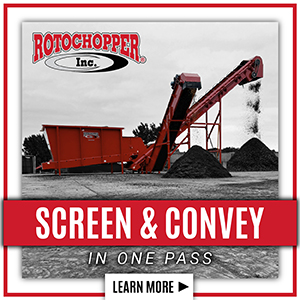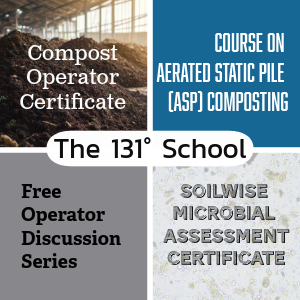Top: The Waste Options composting facility processes about 13,000 tons of MSW and about 2,300 ton of biosolids annually. Photos courtesy of Waste Options Nantucket, LLC.
Craig Coker and Nelson Widell
Waste Options Nantucket, LLC (Waste Options) was recently awarded a new contract for up to 25 years by the Town of Nantucket, located on the island of Nantucket off the coast of Cape Cod in Massachusetts, to operate the island’s Solid Waste and Recycling Facility. Waste Options has been managing the Town’s Solid Waste & Recycling Facility since the late 1990s. In May 2025, the Town also entered into an Asset Purchase and Sale Agreement (the APSA) with Waste Options to buy the Composting Facility, for $1.0 million, and the Transfer Station, for $3.4 million. The purchase is scheduled to close in November 2025.
The Nantucket Facility currently includes three processing facilities: a materials recovery facility (MRF), a mixed-waste rotary drum composter for processing organics and other household trash, and the transfer station, otherwise known as the construction and demolition (C&D) building. Other areas of the facility are used for compost/soil product management, holding areas for hard-to-manage wastes and an excavation waste management area. In addition, there are three lined cell landfills, a lined cell landfill set to begin construction, and an unlined landfill. Currently 10% of the waste that comes to the municipal landfill gets disposed of in the lined cell landfill, while the majority is sorted and transported off-island for final disposal, including recyclables, C&D debris, scrap metal, mattresses, tires, old appliances and unusable textiles.
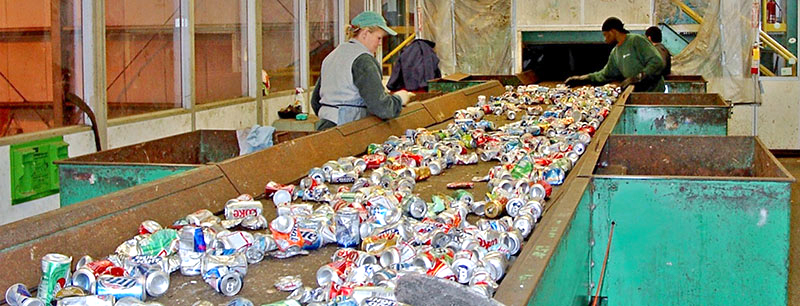
Fiber and commingled containers are sorted at the Materials Recovery Facility. Bales of paper, cardboard, metal, and plastic are shipped off the island to markets.
Facility Origins
The mixed waste and biosolids composting facility on Nantucket began operating in 1999. The project was completed in two phases — a Materials Recovery Facility (MRF) built in 1997 to process Nantucket’s recyclables, and the $7 million composting plant to process the remaining garbage, as well as biosolids and septage. Waste Options built and has owned the composting facility (until the purchase by the Town is completed in November). About 13,000 tons of MSW and about 2,300 ton of biosolids are composted annually.
The plant was designed to process 125 tons/day of mixed waste with biosolids. The solid waste facility includes a residential drop-off area and the MRF. Fiber and commingled containers are sorted and bales of paper, cardboard, metal, and plastic are shipped off the island to markets. Because the population of Nantucket is seasonal, waste flow into the composting plant varies from about 100 tons/day in the summer to around half of that during the winter months.
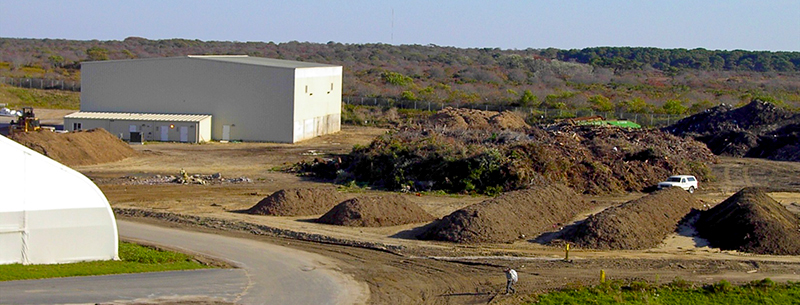
The final step in the process is to blend the mixed waste compost with ground yard trimmings and further compost it outdoors in windrows (foreground).
The rotary digester drum used at the facility was licensed to Waste Options by Bedminster Bioconversion, which marketed the patented Eweson digester drum. Retention time in the drum is three days. An enclosed fabric building houses the composting and product screening operations. Material is composted in aerated windrows. The final screening system includes a BiviTec vibrating deck, Forsberg destoners and an air classification system to remove light plastic. The destoner removes glass and other inert materials. The final step is to blend the compost with ground yard trimmings and further compost it outdoors in windrows.
Finished compost has been utilized on the island. In the mid-2000s, Waste Options worked with a compost marketing consultant who helped create a topsoil out of stump and brush dirt blended with the MSW compost and yard trimmings compost. At that time, almost 800 cy of this blend had been sold at an average price of $24/cy, with 50% of revenues going to the Town of Nantucket. A portion of the compost has been used for landfill capping. Starting in FY 2019, finished compost made from the MSW-biosolids composting facility stopped being made available to the public, because of pending regulations concerning PFAS concentrations in soils. Until standards are established for PFAS concentrations in soils, compost made from the mixed waste-biosolids composting facility will not be available to the public and is instead used on-site at the solid waste complex.
Waste Options operates a yard trimmings only composting facility at the site. Finished compost from that operation is bagged for sale using a Rotochopper Go-Bagger®. It is branded as Nantucket Gold.
Screening And Composting
Several years ago, Waste Options added a McCloskey trommel with knives as a breaker to the front-end processing line to remove most of the plastic ahead of the rotary drum. Another motivation was to have the ability to pull out products known to contain PFAS (per and polyfluoroalkyl substances) such as paper-based food packaging, cosmetics, sunscreens, and food wrappers. Due to space constraints in the receiving building at the front of the facility, the bag breaker was installed in the compost aeration building. (Expanding the tipping floor in the receiving building to house the bag breaker would have cost over $1 million.) The bag breaker, which is essentially a trommel with knives, has 6-inch holes in the screen drum. The 6-inch minus fraction is conveyed to the receiving building, where it is mixed with biosolids and loaded into the drum.
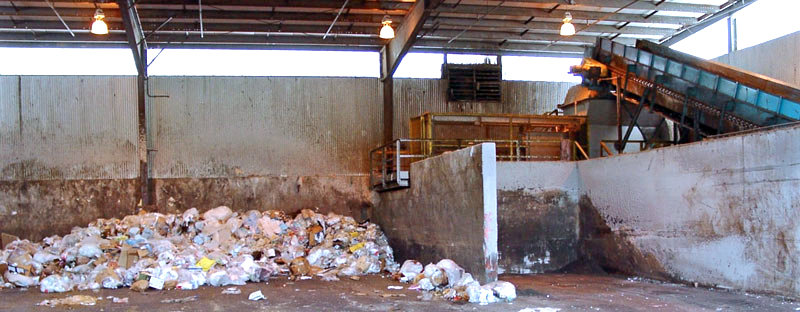
A trommel screen with knives as a breaker was added to the front-end processing line to remove most of the plastic ahead of the rotary drum.
The compost achieves pathogen reduction (PFRP) in the drum, and again on the aeration floor, where it meets the windrow composting requirement of 15 consecutive days at 131°F. After screening and destoning, it is mixed with raw leaves and yard trimmings on a 1:1 basis and composted in windrows for four to six months. Some of the yard trimmings are contaminated with glass bottles that were ending up in the finished compost. A vibratory deck screen was installed, which has been effective for separating out the glass.
Waste Options also installed a new primary trommel with a half-inch screen and added an angled feature that can be adjusted. Following discharge from the drum, the material enters the trommel which elevates up to 30-feet. The high-quality material falls through the screen and the rejects go into a hopper that feeds a baler. The baled residuals are landfilled (baling the waste helps to preserve landfill capacity and reduces transport costs).
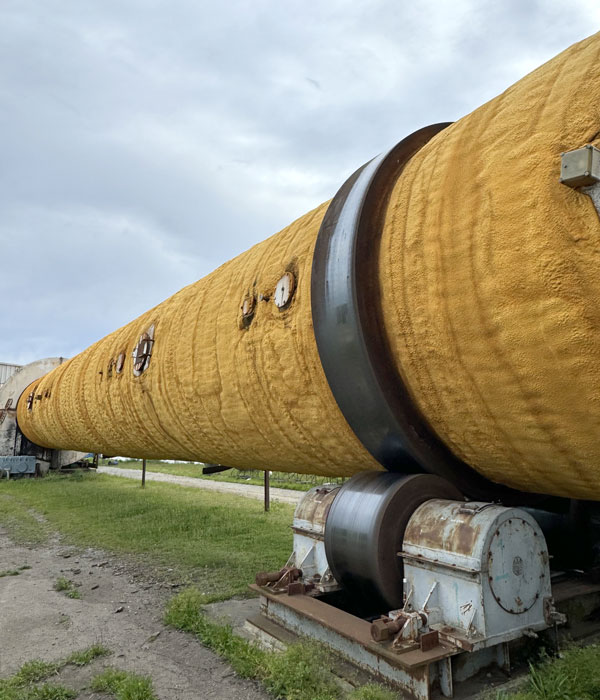
To repair a section of the drum, a 15-foot collar is welded to the area where the shell has worn through. The drum was recently painted yellow, replacing the original gray color.
Maintenance of the rotary drum is critical to protecting its longevity. Waste Options inspects the drum every six months to make sure there is still a wear bar every two to three feet; new wear bars are added as needed. The wear bars help build up a layer of compost on the inside of the drum, which prevents raw waste from rubbing against the internal shell. The last time Waste Options had to replace a 50- to 60-foot section of the drum the cost was $500,000. A less expensive option, which the company now uses, is to purchase a 15-foot section collar and hire a welding crew to put it on the part of the drum where the shell has worn through. In early 2025, additional stress cracks were found in the drum, which were addressed and completed in June 2025.
Another wear point is the standard gear box that turns the drum. The 525 quadruple gear box is a common design for rotary drums. In Nantucket, the gear box is driven by a 150 HP motor. Waste Options has had issues with the standard gear box over the years, e.g., the primary pinion breaks creating an 8- to 12-week downtime while a replacement part or new gear box is procured. To resolve the problem, Philadelphia Gear was engaged to make a custom gear box that has a much larger set of gears and pinions. It was installed with a high speed disengaged coupler, which is more effective in terms of drum operation and reduced maintenance requirements.
Maintenance and wear issues notwithstanding, the mixed-waste rotary drum composter on Nantucket has been a mainstay in the island’s solid waste infrastructure for almost three decades with many years of service ahead.
Craig Coker is co-owner of Star City Compost LLC in Roanoke VA, a senior editor at BioCycle Connect, and CEO of Coker Composting and Consulting. He can be reached at ccoker@cokercompost.com. Nelson Widell was a board member and Executive Vice President of Bedminster Bioconversion Corporation, which supplied the original rotary drum to the Nantucket composting facility. He can be reached at nelsonericwidell@gmail.com.


